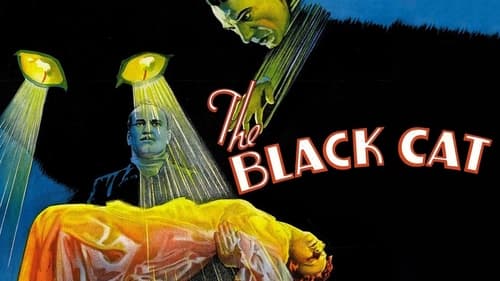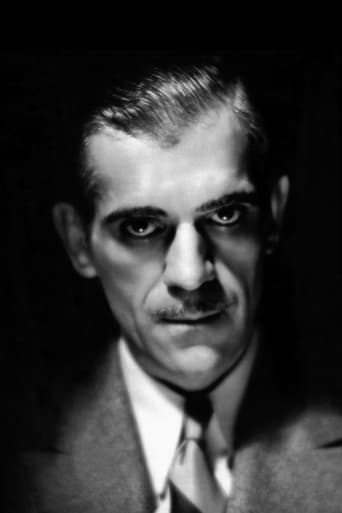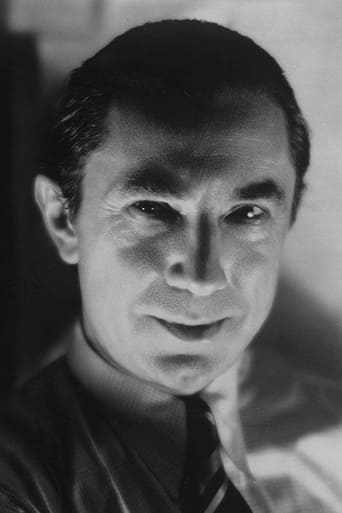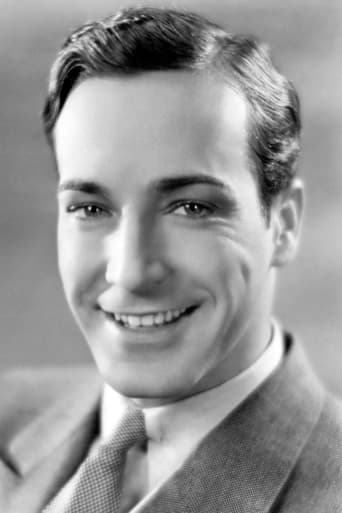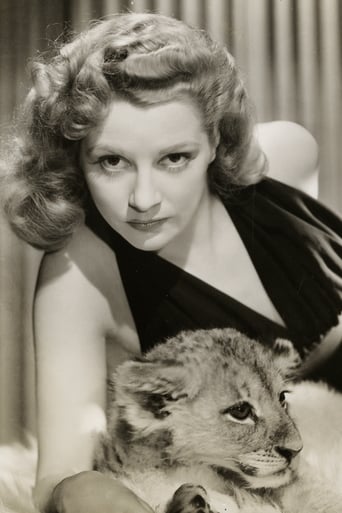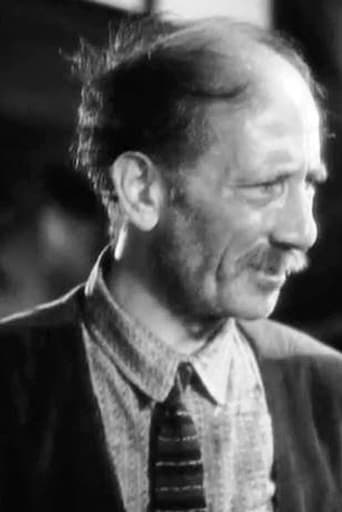skybrick736
Universal studio's The Black Cat from 1934, starred Bela Lugosi and Boris Karloff for the first time together, a run they would share a total of eight times. Not to be confused with Lugosi's 1941 "The Black Cat" with the same name, this 1934 version was a box office hit for Universal and has a lot more notoriety. The film appeals on a few stand points, mostly carried by Bela Lugosi's performance, the film was held together with short scenes and clever dialogue. Acting and characters outside of Lugosi and Karloff definitely suffered, David Manners didn't stick a strong performance and Julie Bishop had no shining moments. The Black Cat should have either followed Edgar Allen Poe's story closer or had a more interesting, thrilling story. The film had great potential that wasn't really showcased but is a decent watch solely because of Bela Lugosi, who can make any film watchable.
begob
Innocent American honeymooners in eastern Europe accept the invitation of a grim, mysterious stranger, who introduces them to an even more grim and mysterious stranger. How will they survive?Utterly daft melodrama that has the merit of Karloff and Lugosi trying to strangle each other after their game of chess goes wrong! Credit to the film makers for including the title of this review in the cod-Latin of a ridiculous satanic ritual during the climax, and for a nice gag at the end.What interested me was the art deco design of the sets. But especially the music, which samples from 19th century romanticism and totally lifts a hair-raising bit of Beethoven. At that point I thought the story might take off, but no - it's just a crowd pleaser, with the theme of good hearted homelanders rescuing themselves from the clutches of nasty foreigners.Overall, complete hokum - but strange to see people at that time (1934) feeling bitter about the recent violence, without anticipation of the horror to come.
Bonehead-XL
"The Black Cat" remains a fascinating film. It must have been like an explosion for audiences in '34. Unlike many of the horror films of the period, the picture is decidedly modern. Its horrors didn't come from supernatural creatures, ghosts, or even bloodless mystery/thriller murders. Instead, it deals with topics like war crimes, torture, Satanism, and implications of necrophilia, rape, and incest. "The Black Cat" hasn't aged a day and remains as potent, stylish, and horrifying now and when it first premiered.Technically, the movie looks fantastic. Hjalmar Poelzig's mansion today looks a bit like a swanky art-deco apartment. It's still a bizarre location, with glass screens randomly bisecting rooms and round swivel chairs artistically placed. As strange as the living room looks, no set stands out more then the Satanic altar at the end. A huge double-t leans against the main altar, like an overturn crucifix. Poelzig, dressed in a red robe, leans against an X-shaped podium. Behind him, a giant pipe organ stands, an odd, crystal-like shape emerging from it. Probably the movie's most famous bit of art design evolves the perfectly preserve body of Bela Lugosi's dead wife, floating in the middle of a glass tube, her hair up on end, like an underwater angel.The creativity extends to the film's direction. Edgar G. Ullman, who later directed surreal film-noir "Detour" and sci-fi favorite "The Man from Planet X," worked on many of the most famous German Expressionism film. (He blatantly references F.W. Murnau's "The Last Laugh," with a verbose cab driver character.) Karloff's introduction involves a slow pan into a bedroom, a white sheet hanging over the bed. A near-nude woman lays beside him as he rises up, totally silhouetted in shadow behind the sheet. Upon seeing Jacqueline Wells as virginal bride Joan, in the forefront of a shot, we see Poelzig clutch a statue of a nude woman, visually illustrating his desire to own her. The shadow of a black cat is cast huge against Lugosi, causing him to fall backwards into a glass wall, drowning in his own phobia. The Black Mass is full of creative angles, starring down at the organ keys, quick cuts between the Satanic worshippers' faces. My favorite moment in the film is one of the most dream-like and inexplicable. As Karloff speaks in voice-over, a monologue about the game Lugosi and him are about to play, about how similar they really are, we the viewer are led on a first-person perspective tour through the underground chambers of the mansion, through the secret doors, up the winding staircase. It's a spellbinding moment. The film is important for its extensive use of music, a daring move at the time. It's a great score too, dark and dreamy, providing exactly the tone needed for the story.Casting the two towering legends of horror as rivals in a game of cruelty is the film's most brilliant masterstroke. Casting both against type was also a surprising move. Hjalmar Poelzig is probably Karloff at his most sinister. The usual whimsy in his eye gives way to a detached psychosis. His mind is cunning but utterly cold. Inspired by Aleister Crowley, Poelzig cuts a sinister figure. His close-crop hair cut, extravagant outfits, and slight eye-liner makes him look like a time-displaced David Bowie. Even then, Karloff can't help but make the guy a little sympathetic. When gazing upon the dead wife's face, he speaks not with a dangerous obsession, but instead a sincere love of her beauty. The hatred that burns between Poelzig and Wendegast is legendary. Wendegast has spent his entire life obsessing over vengeance, determined to unleash his rage on his tormenter. Poelzig meanwhile has gone out of his way to steal or destroy everything Wendegast loves. Took and murder his wife before, never once questioning the incestuous circumstances of the move, marrying his own step-daughter, just to destroy his rival's sanity. Lugosi's gave-it-his-all theatrics works perfectly for a man consumed by revenge. Though toned from the original script, the movie makes it clear that neither man is sane. Both are dangerous, roping the innocent married couple into their deadly game of chess.Not that David Manners or Jacqueline Wells give bad performance. They both do quite well and have a funny, natural chemistry together. But they're outsiders, exiles in the freakish, nightmare world "The Black Cat" inhabits. No doubt they were intended as audience surrogates in 1934.Climaxing with a still disturbing, explicit moment of torture, "The Black Cat" can still raises goosebumps. I wonder if Chan-Wook Park or Jee Woon-Kim have seen it, since you can draw some parallels with their revenge epics. It's a masterpiece of classic horror, floating across the screen like a filmed nightmare.



